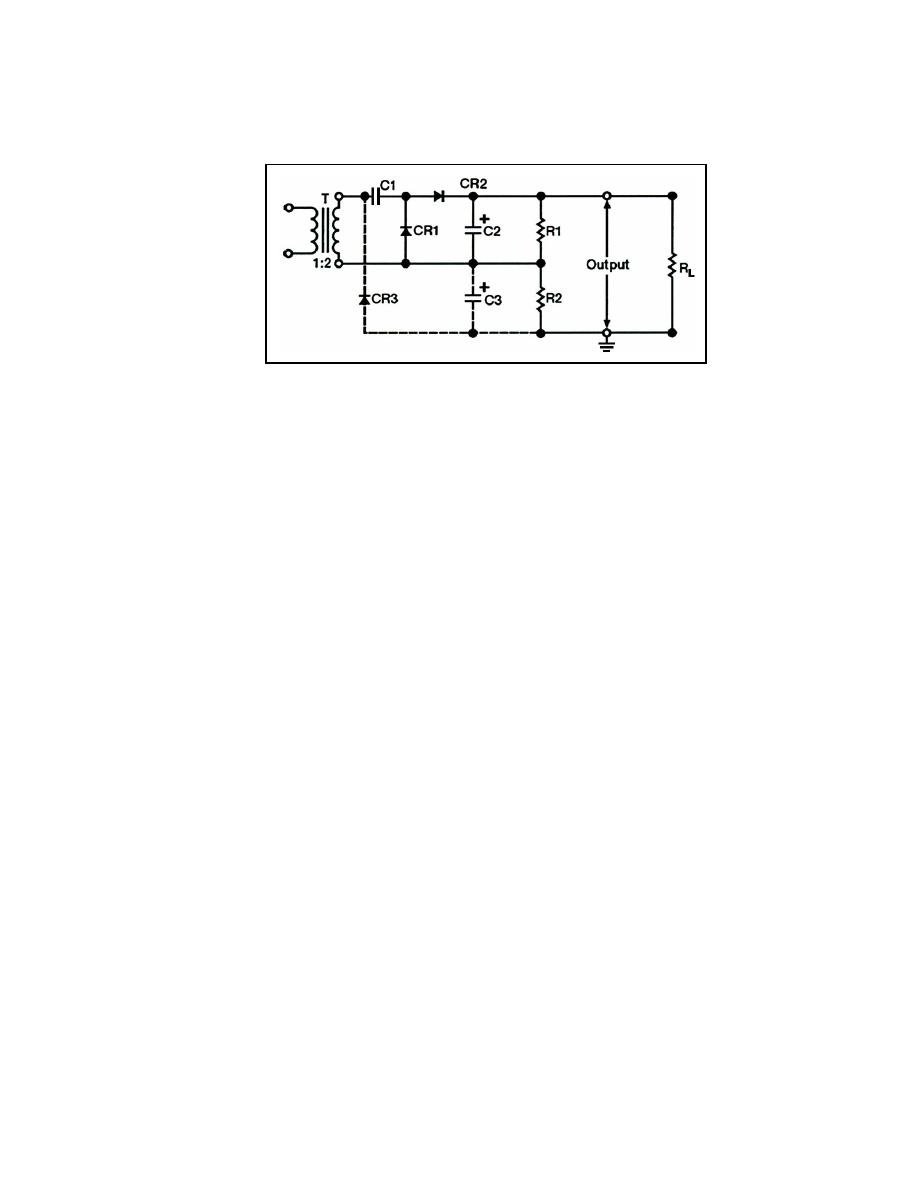
______________________________________________________________ Solid State Power Supplies
rectifier. Of course, if you remove the added circuitry, you will once again have a half-
wave voltage doubler.
Figure 4-47. Half-wave Voltage Tripler
4-128. Figure 4-48, view (A) shows the schematic for the voltage tripler. Notice that CR3
is forward biased and functions like a closed switch. This allows C3 to charge to a peak
voltage of 200 volts at the same time C1 is also charging to 200 volts.
4-129. Figure 4-48, view (B) shows the other half of the input cycle. C2 is charged to
twice the input voltage, or 400 volts, as a result of the voltage-doubling action of the
transformer and C1. At this time, C2 and C3 are used as series-aiding devices and the
output voltage increases to the sum of their respective voltages, or 600 volts. R1 and R2
are proportional according to the voltages across C2 and C3. In this case, there is a 2 to 1
ratio.
4-130. Figure 4-49 shows the circuit of a full-wave voltage doubler. The main advantage
of a full-wave doubler over a half-wave doubler is better voltage regulation. There is better
voltage regulation because of a result of reduction in the output ripple amplitude and an
increase in the ripple frequency. The circuit is, in fact, two half-wave rectifiers. These
rectifiers function as series-aiding devices except in a slightly different way. During the
alternation when the secondary of the transformer is positive at the top, C1 charges to 200
volts through CR1. Then, when the transformer secondary is negative at the top, C2
charges to 200 volts through CR2. R1 and R2 are equal value, balancing resistors that
stabilize the charges of the two capacitors. Resistive load RL is connected across C1 and
C2 so that RL receives the total charge of both capacitors. The output voltage is +400 volts,
when measured at the top of RL, or point "A" with respect to point "B." If the output is
measured at the bottom of RL, it is -400 volts. Either way, the output is twice the peak
value of the AC secondary voltage. Therefore, the possibilities for voltage multiplication
are almost unlimited.
23 June 2005
TC 9-62
4-41



 Previous Page
Previous Page
